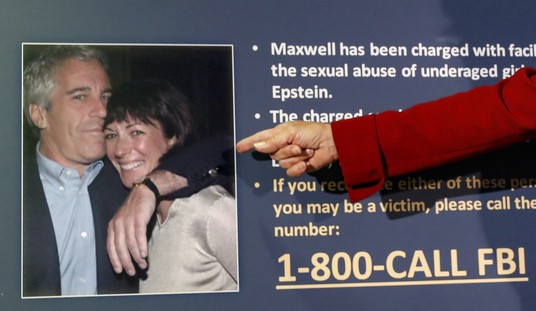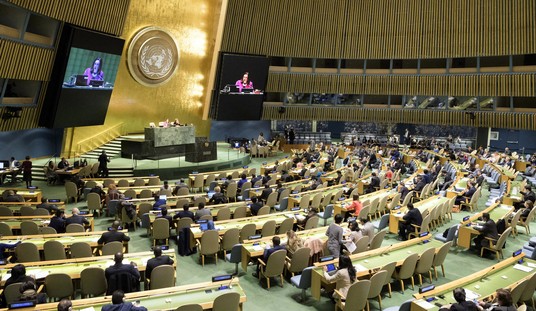Yesterday, the Congressional Budget Office released its cost esimtate on the current bipartisan budget deal. The topline of a net $16 billion in direct “spending reductions” and $7 billion in brand-new revenues (read – taxes) in exchange for $62 billion in new discretionary spending versus the sequester this fiscal year and next seems impressive.
Americans for Limited Government found a whole lot of DC Math in that:
But that’s not the only whopper in this grand bargain. It allegedly “reduces the deficit by $23 billion and it does not raise taxes. It cuts spending in a smarter way,” declared House Budget Committee Chairman Rep. Paul Ryan (R-Wisc.), who brokered the deal.
Doesn’t increase taxes, you say?
Besides the $6.6 billion of increased revenues CBO scores, tucked into the package is $12.6 billion over ten years from a fee of “$5.60 per one-way trip in air transportation or intrastate air transportation that originates at an airport in the United States” that was somehow magically scored not as revenue, but as a spending cut. Huh?
You got that right. In what universe is that a spending cut? It doesn’t matter. The next time you book a round-trip flight and it is $11.20 costlier, remember you’re not actually paying a tax, you personally are reducing federal spending — even though the provision itself does nothing to actually reduce transportation security spending.
Similarly, almost $7.9 billion of increased premiums paid into the Pension Benefit Guaranty Corporation is scored as a spending cut. So are about $6.8 billion of higher customs user fees collected in 2022 and 2023.
Just those three items total $25.9 billion — a full one-third of the supposed $78.4 billion of spending cuts are no cuts at all, but fee increases.
To be fair, the entirety of the officially-scored revenue increases comes not from tax increases or even the end of “legitimate” tax subsidies, but from increased pension contributions from federal employees, worth $6 billion, and anti-fraud measures, worth $0.6 billion. However, if one flies, has a pension, or buys an imported good in 2022 or 2023, one gets to donate more money to the federal government.
Strip out the $26 billion in tax-and-fee increases from the $78 billion in direct spending “cuts”, and there is a net increase in spending of $10 billion versus leaving the sequester alone. That, however, is not the extent of the spending increases. Even though the CBO only scored the increase in discretionary spending directly associated with gutting the sequester for FY2014 and FY2013, they note that three of the provisions for which direct spending is reduced will likely result in increases in discretionary spending:
The COLA provision (the 1 percentage-point reduction for military retirees under the age of 62) also would reduce discretionary accrual payments to the Military Retirement Fund over the 2015-2023 period. While such payments count against discretionary amounts allocated to the Department of Defense as part of the annual appropriations process, they are intragovernmental transactions, and do not result in outlays from the government. If, within the discretionary caps, the reduction in accrual payments makes possible an offsetting increase in other appropriations, the net effect would be an increase in outlays—because an intragovernmental payment would be replaced by spending that goes outside the government….
Eliminate mandatory payments, authorized through 2019, to nonprofit organizations that service student loans. Although this provision would reduce direct spending by an estimated $3.1 billion over the 2014-2023 period, those loans would still need to be serviced. As a result, CBO estimates that implementing this provision would require additional discretionary appropriations of roughly the same magnitude as the mandatory funding that would be eliminated….
Section 706 would add a two-person “self plus one” coverage option for federal employees and retirees under the Federal Employees Health Benefits (FEHB) program. CBO estimates that option would be priced below the “self plus family” option currently available. However, the “self plus family” option would become more costly than under current law because the average number of people covered by policies of that type would rise. CBO expects that federal retirees would be more likely than active federal employees to switch to “self plus one” policies. As a
result, the average cost of FEHB policies for federal retirees would be lower than under current law, and the average cost of FEHB policies for active federal employees would be higher than under current law.The provision would reduce direct spending because the government contribution for health benefits for federal retirees is classified as direct spending. On the other hand, implementing the provision would increase spending subject to appropriation, assuming appropriation of the necessary funds, because the government contribution for health benefits for active federal employees is classified as discretionary spending.
The direct spending cuts associated with the three provisions are, respectively, $6 billion, $3 billion and $3 billion. The CBO unofficially scored the student loan provision as a $3 billion discretionary spending increase. Similarly, it is reasonable to believe that the entirety of the saviings from cutting the retirement pay of “young” military retirees will go out the door elsewhere in the Defense Department budget, and that the entirety of the direct spending savings from the change in the health benefits plan will go out the door on the discretionary side. After all, we are talking about the federal government.
That doesn’t even take into account the $28 billion counted as direct spending reductions from extending the sequester to FY2022 and FY2023. Given the sequester was trashed now, there is no guarantee that it won’t be trashed again next decade, with that $28 billion in projected reductions zeroed out.








Join the conversation as a VIP Member